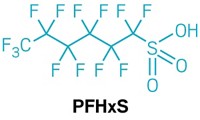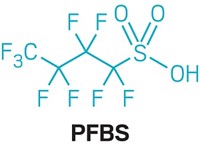Advertisement
Grab your lab coat. Let's get started
Welcome!
Welcome!
Create an account below to get 6 C&EN articles per month, receive newsletters and more - all free.
It seems this is your first time logging in online. Please enter the following information to continue.
As an ACS member you automatically get access to this site. All we need is few more details to create your reading experience.
Not you? Sign in with a different account.
Not you? Sign in with a different account.
ERROR 1
ERROR 1
ERROR 2
ERROR 2
ERROR 2
ERROR 2
ERROR 2
Password and Confirm password must match.
If you have an ACS member number, please enter it here so we can link this account to your membership. (optional)
ERROR 2
ACS values your privacy. By submitting your information, you are gaining access to C&EN and subscribing to our weekly newsletter. We use the information you provide to make your reading experience better, and we will never sell your data to third party members.
Persistent Pollutants
US EPA recommends cleanup level for PFOS and PFOA in groundwater
70 ppt standard would apply to aquifers that are current or potential sources of drinking water
by Cheryl Hogue
April 26, 2019

With a number of caveats, the US Environmental Protection Agency is recommending the cleanup of groundwater tainted with more than 70 ppt of either of two widespread polyfluorinated chemicals.
The EPA’s April 25 draft interim recommendations would apply only to groundwater that is a current or potential source of drinking water and would not have the legal force of regulations. They would also apply only in states that lack what the agency deems an “appropriate” drinking water standard for the two chemicals, perfluorooctanoic acid (PFOA) and perfluorosulfonic acid (PFOS). The recommendations follow the EPA 2016 health advisory limit of 70 ppt for PFOS and PFOA, individually or combined, in drinking water.

The two substances, which are no longer commercially produced in the US, contaminate groundwater across the nation and the world. In many areas, the pollution stems from military bases and airports that for years used fire-fighting foams containing PFOS, PFOA, or both. The chemicals were also used as industrial surfactants and to make nonstick coatings.
Sen. Tom Carper (D-Delaware) criticizes the EPA’s recommendations because they fail to include emergency responses, such as providing bottled drinking water.

“People drinking water contaminated at levels well in excess of 70 ppt may not be entitled to safe drinking water during the months or years cleanup could take to complete,” Carper says.
David Andrews, a senior scientist at the Environmental Working Group, says because recommendations aren’t legally binding, there’s no guarantee that those liable for pollution, notably industry or the military, will abide by them.
The Department of Defense last year suggested a cleanup level of 380 ppt for PFOS and PFOA in groundwater. Andrews tells C&EN that because these chemicals are mobile in groundwater, it is important for the level that triggers cleanup to be no higher than 70 ppt. This will help prevent PFOS and PFOA moving through an aquifer from tainting clean water to levels above EPA’s health advisory limit.
The FluoroCouncil, which represents companies that make many types of fluorochemicals, did not respond to requests for comment by C&EN’s deadline.





Join the conversation
Contact the reporter
Submit a Letter to the Editor for publication
Engage with us on Twitter